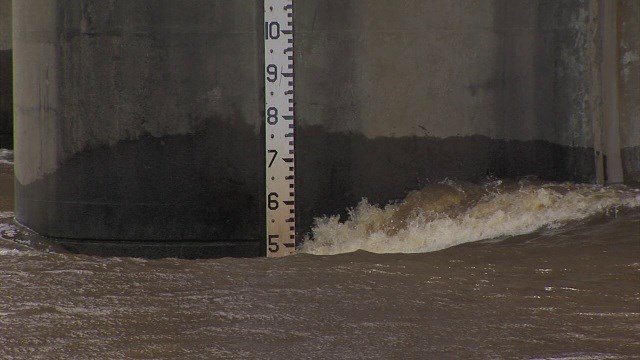The leaders responsible for watching our waterways expect water levels to continue to rise this week.
The Neches River at the Lower Neches Valley Authority's saltwater barrier in Beaumont is flowing at 30,000 cubic feet per second.
That's more than 26,000 feet faster than what water normally flows at there.
Both the Neches and Sabine River are expected to crest by the end of this week.
"Seems like Mother Nature when she decides to break a drought she sometime overdoes it," said Butch Choate, who manages operations with the Sabine River Authority, describes how turbulent this southeast Texas spring has been. "I've been living in east Texas for about 71 years now … This is one of the craziest springs that I've seen as far as the rainfall and the weather," he said.
All of southeast Texas was under a flash flood watch last night.
The Sabine River in Deweyville measures 25 feet right now. It's expected to crest Thursday at 26 feet.
Farther west, the Neches River at the saltwater barrier in Beaumont is five feet above sea level.
"All the gates are open 100 percent," said Lower Neches Valley Authority general manager Scott Hall. "We're passing everything that comes to us. So we're not holding any waters back. We're allowing all the flood waters to evacuate as they get here."
The Neches will crest in Beaumont at five and half feet above sea level by Sunday.
The National Weather Service forecasts moderate flooding for the rivers; this does not significantly endanger roads or homes.
Northern bodies of water have held much of the water back, such as the Toledo Bend Reservoir for the Sabine River.
Lake Sam Rayburn has held back about 770,000 acre feet of water from flowing downstream into the Neches River.
Though severe flooding isn't expected, authorities still stress caution.
"Turn around don't drown," said Hall. "Don't drive into rising water or roads underwater. The river is very full right now. The current is very swift. Be very careful if you're out in the waterway."
The gates at the LNVA saltwater barrier remain open. Gates at the Toledo Bend Reservoir near northwest Newton County are open, and gates at the Steinhagen Reservoir near Jasper are open.
This keeps water from overflowing banks and helps it to move quickly downstream to the Gulf of Mexico.


